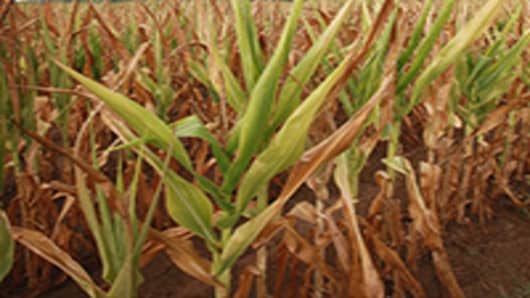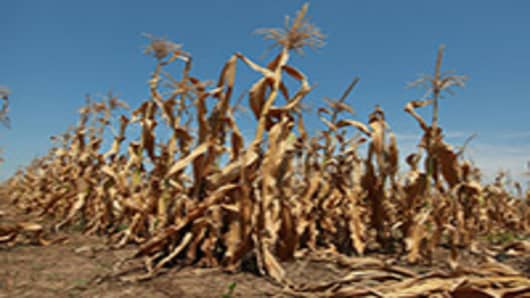Rain is expected in the Midwest this week, but it’s too late for much of the corn crop, nearly half of which is now expected to be in poor condition or worse.
The latest U.S. Department of Agriculture data shows that just 26 percent of the corn crop is in good to excellent condition, as compared to 31 percent last week. At the same time, 45 percent is now poor or very poor, up from 38 percent last week.
These numbers were published Monday by the USDA and are used as a rough measure, ahead of the USDA’s field work in August when it will assess the crop in the field.
“It’s in line with what I expected. In the corn we continue to see deterioration in the areas that missed any kind of showers,” said Shawn McCambridge, Jefferies Bache analyst.
“The biggest change we saw was in Iowa and that’s our biggest producer. They were down 13 percent in good to excellent and up 13 percent in poor to very poor,” he said. Just 23 percent of the Iowa crop was seen as good to excellent, and 37 percent was listed as fair. In Illinois, 7 percent of the crop was good and none of it was rated excellent. Sixty-six percent was poor or very poor in Illinois.
Grain prices fell Monday, following world commodities markets, but also on a forecast for rain. Weather updates show some rains for the northern Midwest this week and there is better weather in extended outlooks.
Soybeans were also deteriorating. Just 31 percent is in good to excellent condition, down from 34 percent last week. But soybeans still have a chance to recover. But much of the damaged corn will not recover, since it was hit by heat and drought during its key pollination phase.
“We’re looking at showers moving through the Midwest this week and moving through some of our eastern areas and some of the northern areas. That will certainly be beneficial for the crop at this stage of development,” he said of soybeans.
Follow Patti Domm on Twitter: @pattidomm
Questions? Comments? Email us at marketinsider@cnbc.com




